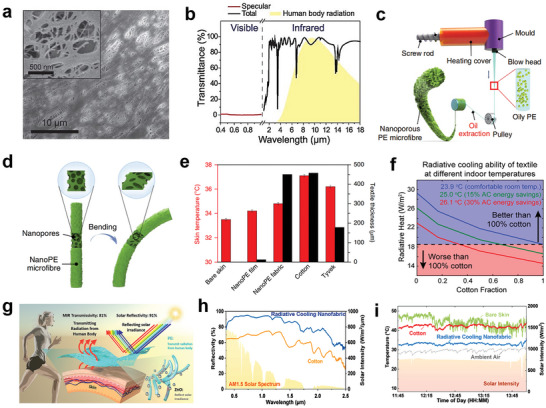Figure 5.

MIR transparent radiative cooling textiles. a) SEM images of nanoPE. The nanopores are only 50 to 1000 nm in diameter, ensuring high infrared transmittance. b) Total and specular transmittance of infrared and visible light for nanoPE, with an average pore size of 400 nm. Reproduced with permission.[ 59 ] Copyright 2016, The American Association for the Advancement of Science. c) A schematic diagram of the manufacturing process for the nanoPE microfiber. d) An illustration showing the nanoscale porosities adapting to a bent deformation. e) Artificial skin temperature measurement of nanoPE fabric and others. Reproduced with permission.[ 60 ] Copyright 2018, Springer Nature. f) Outward total radiative heat flux versus cotton fraction for different ambient temperatures. Reproduced with permission.[ 61 ] Copyright 2016, American Chemical Society. g) Schematic of the radiative cooling nanofabric embedded with ZnO nanoparticles. h) UV–vis–NIR reflectance spectra of the radiative cooling nanofabric and cotton. i) Simulated skin temperatures with the radiative cooling nanofabric, cotton, and bare skin measured using thermocouples on a clear summer day. Reproduced with permission.[ 64 ] Copyright 2022, American Chemical Society.
